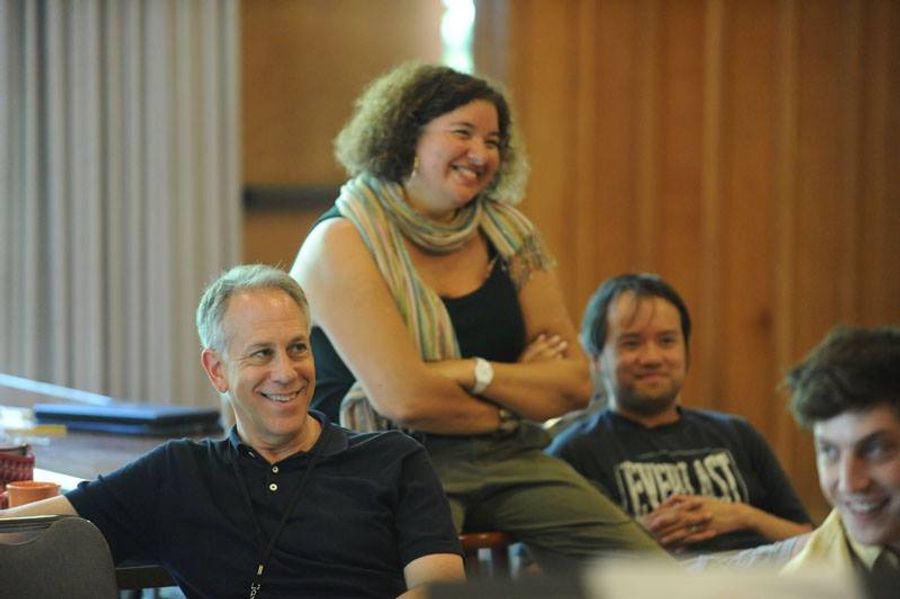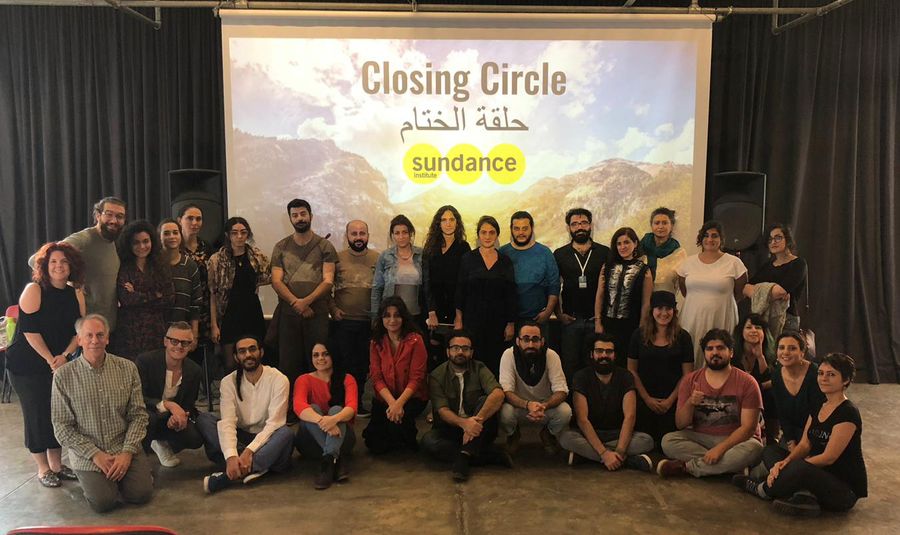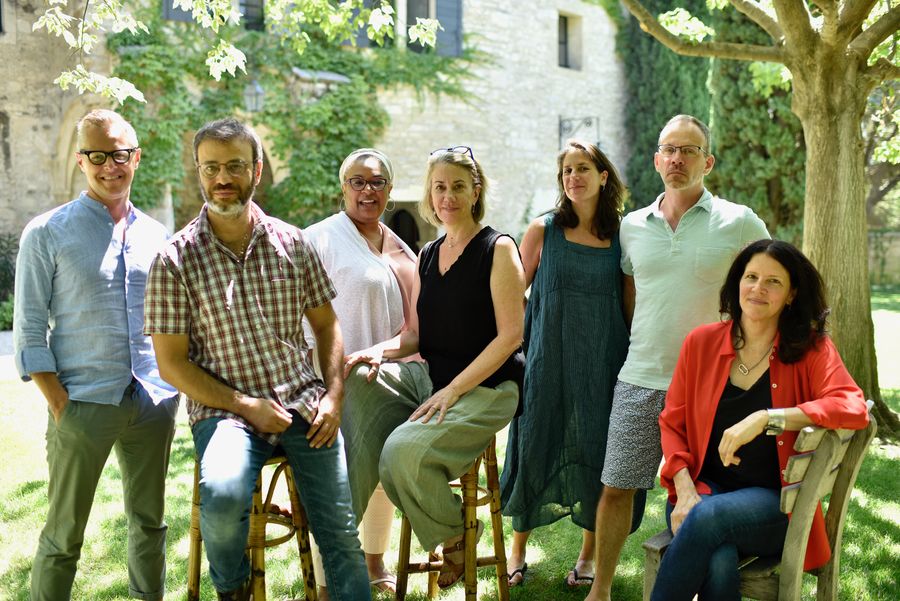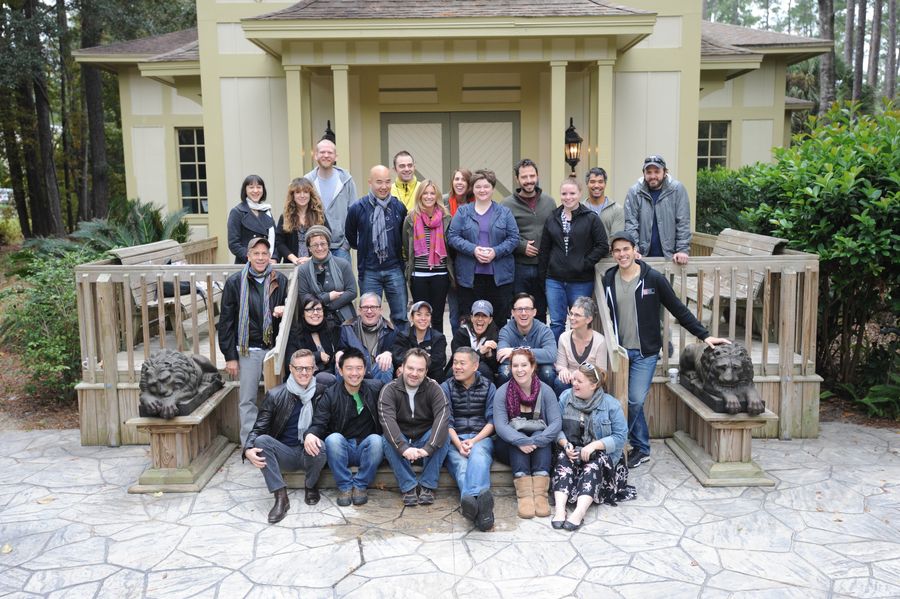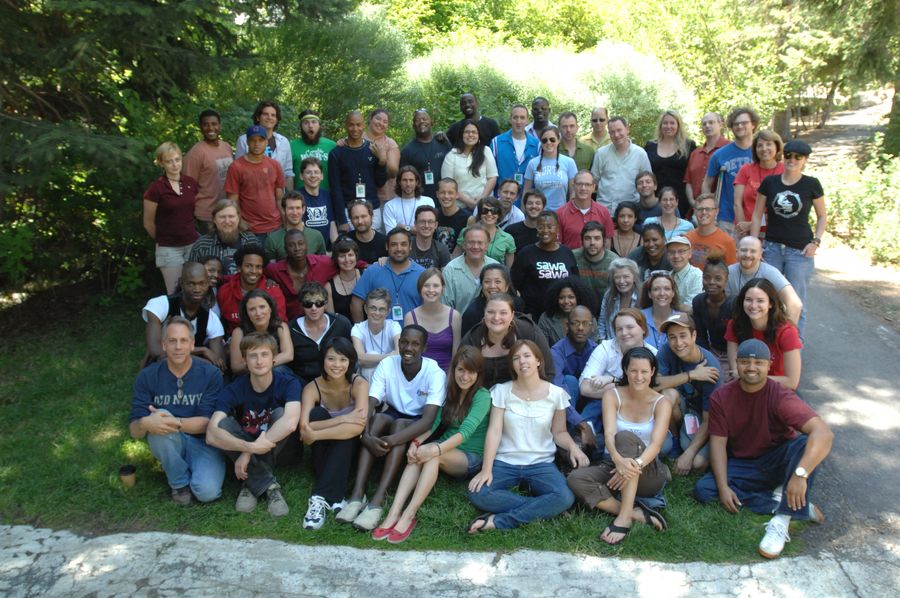The Sundance Theatre Program never had a proper interment or requiem. Not exactly a Polyneices problem, but still—there has been no formal moment to mourn its passing, because somehow in the thick of the pandemic and amid the vital winds of a social justice movement, a beloved play development program quietly disappeared. After 40-plus years. I had the amazing good fortune to oversee Sundance Theatre Labs for more than half of that time.
A month ago, the Sundance Institute e-blasted an announcement which confirmed that a “new iteration” of what was Sundance Theatre—actually a hybrid of three separate and now extinct Sundance programs—is being phased out, due to budgetary concerns. That recent revision of the Theatre Lab was itself a bit under the radar.
Let me back up: In 2019, after 23 years as artistic director of the Sundance Theatre Program, I made the tough decision to step aside. Twenty-three years was plenty of time to have the great privilege of engaging with one of the most satisfying and dynamic theatre jobs anywhere. I worked with and supported hundreds of artists and collaborated with brilliant colleagues, including some of our world’s most perceptive dramaturgs. In my heart, I simply knew it was the moment to “make space,” and I dearly hoped that the Institute would find new leadership for the Theatre Program—an individual who would bring a remarkable new lens to developmental theatre, and under whose leadership it would thrive.
When asked, “But what will you do next?” I replied: “Not sure, but I know how to create and run artist residencies. Maybe I’ll find something in that world.” And then, as often happens when you put very clear energy out into the world, MacDowell asked me to interview to be their executive director.
My Sundance farewell party is a memory I will cherish. At the Library of the Public Theater, in a program gorgeously curated by my Sundance creative partner, Christopher Hibma, I was serenaded by the likes of Michael R. Jackson, Todd Almond, Somi, and Jeanine Tesori (among others), and heard testimonials from dozens of playwrights, actors, directors. I drank. After a while, I began to feel like I was sitting at my own shiva. Later, when I related that to my therapist, he said, “How great! Who gets to be at their own funeral?”
Ultimately it turned out to be an elegy for the Sundance Theatre Program as well. Before my official last day, the leadership of Sundance confided in me that they were considering putting the theatre program on “hiatus” after I departed, and how did I feel about that? What I felt was rage. Was the success that theatremakers found at Sundance so easily disposable? Would Sundance leadership have placed the Film Festival or Film Labs on hiatus if those leaders stepped down? We all know that “hiatus” is too often the precursor to “the end.”
Christopher Hibma led the theatre program with grace and vision over the next year and a half. Though of course we did not know it, the final live iteration of the Sundance Theatre Program in Utah would be in July of 2019, led by Christopher and a guest artistic director, the sublime Lisa Peterson, a multiple alumna of our program. I had the good fortune of helping to select those 2019 projects, but by the time the Lab took place I was already situated on the MacDowell mountain, in New Hampshire, observing from afar.
One year later, the Theatre Lab had gone virtual. Then came the announcement that there would be “a break.” A formal survey of our field was conducted, the result of interviews with dozens of alumni and supporters to determine next steps. The next step was, from my perspective, quite incomprehensible. Instead of a Lab focused on writers and directors and collaborative teams, there would be a revamped “hybrid” model, combining the Sundance Film Music Program and the Film’s New Frontiers Program, which would integrate with the vestiges of the Theatre Program, to “look forward” at how contemporary art was now being made. Okay. Recently, after a live outing at the Ucross Foundation (a stalwart partner of the Sundance Theatre Lab for a quarter of a century), the entire endeavor came to an end.
When the wondrous play development hub The Lark tragically closed its doors in 2021, the announcement of the end was at least loud and clear (if not all the reasons behind it), and we all mourned. When some of us mentioned, “Wow, no Lark, and no Sundance Theatre Lab either,” many were shocked to hear that Sundance Theatre Lab had also ceased to operate.
Running the Sundance Theatre Labs was without doubt the greatest adventure of my life. The Labs expanded to be intentionally global, with a decade-long commitment to artists in six East African countries, including three-week labs on the islands of Lamu and Zanzibar, workshops in Nairobi, Addis Ababa, Kigali, Dar Es Salaam and Kampala. Global artist citizenry was a huge learning curve, and was co-led by extraordinary East African art makers, including playwright Asiimwe Deborah. When we shifted our attention to the Middle East and North Africa, another era was born. Jumana Al-Yasiri joined us to oversee these convenings.
Perhaps my most treasured moment was when we relocated the annual Sundance Utah Lab to Marrakech, Morocco, where half of the projects were by Americans and half were created by artists from the Arab World. Max Posner’s The Treasurer, Martyna Majok’s Sanctuary City, and Hansol Jung’s Wild Goose Dreams were among new plays developed alongside work by Syrian, Lebanese, Moroccan, Tunisian, Egyptian, and Palestinian writers. It felt risky and innovative, and the community of world artists came to trust Sundance.
Granted, running a Theatre Program under the banner of a giant Film Institute was always a bit slippery. As the world of filmmaking technology and distribution changed irrevocably, Sundance Institute needed to rise to meet that challenge, and so resources grew exponentially to meet the ever increasing demands of cinema. I got it. As a member of senior leadership, I learned a lot and championed the budgetary leanings to deepen and expand what filmmakers needed.
Theatre needs resources too, and I am the first to concede that we were granted amazing autonomy and trust by the Sundance board and leadership. Even so, I watched as we became what felt like the cowlick on the well-coiffed head of the various Sundance film programs; we sometimes felt a bit like the red-headed stepchild.
That feeling was ironic, because Sundance founder Robert Redford never hesitated to remind us that when he began the Institute back in the 1980s, he almost immediately established what was then the Playwrights Lab, side by side with the film lab program, initially run by Jerry Patch and David Chambers. Bob proudly considers himself a man of the theatre, since that’s where he began his career. I was privileged to accompany him to see New York theatre on more than one occasion, and he would often say afterwards: “I wish I hadn’t waited so long. It’s too late to go back now.” Of course, I always urged him to reconsider.
My sense is that as the Institute was forced into making priority decisions, especially when hit with such brute force by our upside-down world, the Theatre Program seemed expendable, because it was not in the end one of the Institute’s stated “core values.” We were on the chopping block because we were seen as an inessential branch on the mighty trunk of the Sundance tree.
This was and remains a tragic misunderstanding of theatre and how it functioned at Sundance. Robert Redford did not view theatre as “the other.” In fact, for him as for me, theatre was a crucible, a pilot light, the slow-burning, innermost heat from which so much of film art itself sprang. It was in a sense the roots of the tree. We held one piece of the Institute’s beating heart in our hands, and I know that theatre artists nourished its soul. And, unlike film, we didn’t need a lot to tell our stories. We only needed space—an empty room on the Sundance Mountain, or a bare cabin in the desert, or an outside patio beside the Indian Ocean, or the vestibule of a hotel—and each other, a creative community of talented souls who invent and tell stories.
For me, the tragedy of Sundance Theatre Labs’ ending is that this core of storytelling was perceived somehow to be “extra,” unnecessary, maybe even a distraction from the business at hand. That business seemed to be growth for its own sake. Whenever the leadership of Sundance met, it was disquieting to me how quickly the subject of money came into the conversation. Didn’t Redford launch the Institute as a response to, and a refuge from, the capitalistic pressures of Hollywood? As the Institute grew from an annual budget of $13 million to $21 million, finally to $51 million, with sights set on a $70-plus million budget, I would often ask: “Is it possible that we’re big enough?” Or even, “Maybe we can be smaller?” But the leadership was lock-stepped into what I saw as a capitalistic model of “more” and “bigger” as the future. I kept waiting for the shoe to drop, a huge correction in the market, or a time when film festivals might go out of vogue and our earned income would shift downward. What would happen then? None of us could have imagined the asteroid that was actually hurtling at us all.
Those of us who labor in the nonprofit new-play field know that playwrights will always need space and time and community in which to stretch their muscles and allow themselves to make mistakes. Young or mid-career or seasoned, there is not an author I know who does not need time to write, and a place where they can hone their drafts with fiercely smart and talented actors in service of the work.
At the end of each lab, at the final party, I would hang back, and eventually an actor or writer or choreographer or composer would come to me and say something like, “I have attended a lot of workshops, but I got more accomplished here than I ever have in my life. Most of all, I met people from all over the world who I would otherwise never have known. I have found new collaborators.”
These days, every single week I walk through New York or hop on a subway, I inevitably meet artists touched by Sundance. I am most often told simply: “Sundance changed my life,” or, “Sundance gave me my career.”
The truth is, it worked both ways. The artists who defined Sundance Theatre, and who in turn shape our theatregoing lives, give us the oxygen we need to survive, especially these days, as I observe theatremakers taking risks that other humans rarely do. Their experiments create revolutionary ways of seeing ourselves, crossing boundaries literally and figuratively all the time.
I have had the glory to sit at a handful of recently opened plays I had helped select for their final labs, plays that are just now meeting their audiences. The Sundance imprints on some of these works are light (a conversation with a dramaturg at a lab); other shows I’ve seen recently received multiple residencies with the Labs. I sit at Kimberly Akimbo and Suffs and A Strange Loop and The Vagrant Trilogy and Oratorio for Living Things and my eyes get teary.
What institutions will be around to support these same artists, let alone those we’ve yet to come to know? I suppose new ways of uplifting live storytellers will come to be, because, just as theatremaking will always survive, so invention is endless. Let us hope. And let us remember.
RIP Sundance Theatre Lab.
Philip Himberg (he/him) is executive director of MacDowell.

